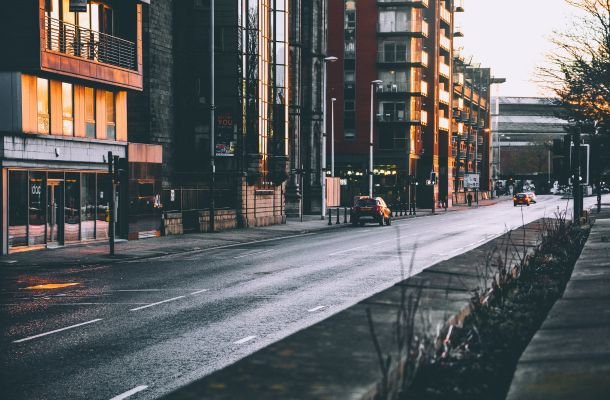Roadways of Columbia, SC

Columbia, the capital city of South Carolina, serves as a central hub for transportation in the state, featuring a well-developed roadway network that connects the city to surrounding regions and beyond. The roadways in Columbia play a crucial role in the daily lives of residents, commuters, and visitors, offering access to neighborhoods, business districts, and cultural landmarks. This guide provides an in-depth look at Columbia’s roadways, including major highways, local streets, infrastructure projects, traffic management, and transportation challenges.
Historical Development of Columbia’s Roadways
Early Roadway Development
The development of Columbia’s roadways dates back to its founding in 1786. As a planned city, Columbia’s original grid layout was designed to facilitate easy navigation and access. Early roads connected the city to key trading routes and neighboring towns, establishing Columbia as a pivotal point for commerce in South Carolina.
Expansion and Modernization
With the rise of the automobile in the 20th century, Columbia’s roadway network expanded significantly. The construction of highways and the development of suburban neighborhoods led to the modernization of road infrastructure. Key projects, such as the construction of interstates and bridges, transformed Columbia into a major transportation center in the Southeast.
Major Highways and Interstates
Interstate Highways
Columbia is served by three major interstate highways that provide vital connections within the state and to neighboring regions.
Interstate 26 (I-26)
Overview:
I-26 runs from the mountains of North Carolina through Columbia to Charleston, SC, on the coast. It is a critical corridor for east-west travel in South Carolina.
Key Features:
- Length in Columbia: Approximately 15 miles within the metropolitan area.
- Primary Uses: Facilitates travel to Charleston, Asheville, and other key destinations.
- Major Exits: Include Harbison Boulevard, Broad River Road, and the connection to I-20.
Interstate 20 (I-20)
Overview:
I-20 is an east-west interstate that connects Columbia to Atlanta, GA, to the west, and Florence, SC, to the east. It serves as a key route for commercial and commuter traffic.
Key Features:
- Length in Columbia: Around 20 miles within the city limits.
- Primary Uses: Used for regional travel and as a bypass for downtown traffic.
- Major Exits: Include Two Notch Road, Clemson Road, and I-77.
Interstate 77 (I-77)
Overview:
I-77 runs north-south from Columbia to Charlotte, NC, and serves as a critical link between the two metropolitan areas.
Key Features:
- Length in Columbia: About 10 miles within the city area.
- Primary Uses: Facilitates travel between Columbia and Charlotte and connects with I-20 and I-26.
- Major Exits: Include Garners Ferry Road, Shop Road, and I-20.
U.S. Highways
U.S. Route 1 (US 1)
Overview:
US 1 is a major north-south highway that runs parallel to I-20 through Columbia, providing an alternative route for local and regional travel.
Key Features:
- Primary Uses: Serves local traffic, accessing neighborhoods and commercial areas.
- Major Sections: Includes Two Notch Road and Augusta Highway.
U.S. Route 378 (US 378)
Overview:
US 378 runs east-west through Columbia and connects the city to Sumter and the Lake Murray area.
Key Features:
- Primary Uses: Connects Columbia to nearby towns and recreational areas.
- Major Sections: Includes Garners Ferry Road and Sunset Boulevard.
State Highways
South Carolina Highway 48 (Bluff Road)
Overview:
Highway 48, also known as Bluff Road, is a state highway that runs through southern Columbia, providing access to industrial areas and serving as a key route for freight traffic.
Key Features:
- Primary Uses: Access to industrial zones and connections to I-77.
- Major Sections: Passes near Williams-Brice Stadium and the State Fairgrounds.
Major Bridges and Crossings
Gervais Street Bridge
Overview:
The Gervais Street Bridge is one of Columbia’s most iconic landmarks, connecting downtown Columbia with West Columbia over the Congaree River.
Key Features:
- Historical Significance: Completed in 1928, it was the first bridge in the city to use reinforced concrete.
- Current Use: Handles local traffic and provides a scenic entryway into the downtown area.
Blossom Street Bridge
Overview:
Blossom Street Bridge is another key crossing over the Congaree River, facilitating access between Columbia’s downtown and the University of South Carolina’s campus.
Key Features:
- Primary Uses: Frequented by students, commuters, and visitors heading to campus events.
- Traffic: Known for heavy pedestrian and bicycle traffic, especially during school hours.
Major Roadways and Local Streets
Assembly Street
Overview:
Assembly Street is one of Columbia’s main north-south arteries, running through the heart of downtown and connecting key landmarks such as the State Capitol and the University of South Carolina.
Key Features:
- Significance: A major route for parades, events, and daily commuting.
- Improvements: Recent upgrades include bike lanes and pedestrian-friendly crossings.
Devine Street
Overview:
Devine Street is a major commercial corridor that runs through several of Columbia’s neighborhoods, known for its shopping, dining, and boutique stores.
Key Features:
- Primary Uses: Retail, dining, and local traffic.
- Challenges: Traffic congestion during peak hours due to its popularity.
Harden Street
Overview:
Harden Street runs through Columbia’s Five Points neighborhood, a historic shopping and entertainment district popular with students and young professionals.
Key Features:
- Significance: A lively street with bars, shops, and restaurants.
- Traffic Management: Ongoing efforts to manage traffic flow and improve pedestrian safety.
Traffic Management and Infrastructure
Traffic Control Systems
Columbia employs various traffic management systems to control and improve traffic flow, including:
- Traffic Lights and Signals: Modernized with sensors and timed coordination to reduce congestion.
- Smart Traffic Monitoring: Cameras and traffic sensors installed at major intersections for real-time monitoring and adjustments.
Road Maintenance and Upgrades
The City of Columbia and the South Carolina Department of Transportation (SCDOT) are responsible for road maintenance and infrastructure upgrades. Recent projects include:
- Pothole Repairs: Regular maintenance programs to address potholes and surface wear.
- Repaving and Resurfacing: Scheduled repaving projects to improve road quality and safety.
Major Infrastructure Projects
Malfunction Junction Improvement Project
Overview:
The “Malfunction Junction” refers to the heavily congested interchange where I-20, I-26, and I-126 meet. This project aims to alleviate congestion and improve safety.
Key Features:
- Goals: To reduce traffic delays, improve safety, and accommodate future traffic growth.
- Timeline: Expected completion in phases over several years, with ongoing construction updates.
Columbia Crossroads Project
Overview:
This initiative includes various projects aimed at improving the flow of traffic within Columbia’s city center, particularly around major intersections and entry points.
Key Features:
- Focus Areas: Upgrading intersections, adding turn lanes, and enhancing pedestrian crossings.
- Community Impact: Designed to reduce commute times and improve overall traffic safety.
Public Transportation and Roadway Intersections
The COMET Bus System
Overview:
The COMET (Central Midlands Regional Transit Authority) provides bus services throughout Columbia, offering an alternative to driving and helping to alleviate traffic on busy roadways.
Key Features:
- Routes: Extensive network covering key roadways, neighborhoods, and commercial areas.
- Interconnectivity: Buses are synchronized with major roadway intersections for better commuter access.
Key Intersections
Columbia’s roadways feature several critical intersections that are vital for traffic flow.
Intersection of Gervais Street and Assembly Street
Overview:
One of the busiest intersections in downtown Columbia, serving as a key point for accessing government buildings, businesses, and tourist attractions.
Traffic Challenges:
Heavy traffic during peak hours, requiring careful signal management to prevent gridlock.
Intersection of Bull Street and Elmwood Avenue
Overview:
This intersection serves as a gateway to the BullStreet District, a major development area that includes the new baseball stadium and mixed-use spaces.
Traffic Improvements:
Recent upgrades have included new traffic signals, turn lanes, and improved signage to accommodate increased traffic from ongoing developments.
Road Safety and Pedestrian Infrastructure
Road Safety Initiatives
Columbia has implemented various initiatives to improve road safety, including:
- Vision Zero Program: Aimed at eliminating all traffic fatalities and severe injuries through better road design, education, and enforcement.
- Speed Reductions: Lower speed limits in high-pedestrian areas, particularly near schools and downtown.
Pedestrian and Bicycle Infrastructure
Sidewalks and Crosswalks:
The city has invested in expanding and upgrading sidewalks and crosswalks to improve pedestrian safety, especially in high-traffic areas.
Bike Lanes:
Designated bike lanes have been added to major streets, including Assembly Street and Gervais Street, to encourage cycling as a safe mode of transportation.
Future Roadway Developments
Planned Projects
I-26 Widening
Overview:
Plans are underway to widen I-26 from Columbia to Charleston, addressing one of the state’s most congested corridors.
Project Scope:
Includes additional lanes, updated interchanges, and improved safety features.
Columbia’s Complete Streets Initiative
Overview:
This initiative aims to redesign streets to accommodate all users, including pedestrians, cyclists, and motorists, with a focus on accessibility and safety.
Key Features:
- Enhanced Crosswalks: Improved signage and markings at pedestrian crossings.
- Green Infrastructure: Incorporating landscaping and green spaces along roadways.
Challenges Facing Columbia’s Roadways
Traffic Congestion
As Columbia grows, traffic congestion remains a significant challenge, particularly on major highways and at key intersections. Efforts to expand roadways and improve traffic management are ongoing but face budgetary and logistical hurdles.
Road Maintenance
Maintaining Columbia’s extensive roadway network requires continuous effort and funding. Challenges include aging infrastructure, weather-related wear and tear, and the need for frequent repairs.
Public Transportation Integration
Integrating public transportation options with the existing roadway network is an ongoing effort, with goals to reduce dependency on personal vehicles and improve overall traffic conditions.
Conclusion
Columbia, SC, is served by a comprehensive network of roadways that facilitate travel within the city and connect it to the broader region. From historic streets and iconic bridges to major interstates and modern infrastructure projects, the roadways of Columbia are central to the city’s functioning and growth. As the city continues to expand and evolve, ongoing improvements and developments in road infrastructure will play a crucial role in enhancing mobility, safety, and quality of life for residents and visitors alike.
Find us
Tuesday
Wednesday
Thursday
Friday
Saturday
Sunday
10 am – 10 am
10 am – 10 am
10 am – 10 am
10 am – 10 am
10 am – 10 am
10 am – 10 am






